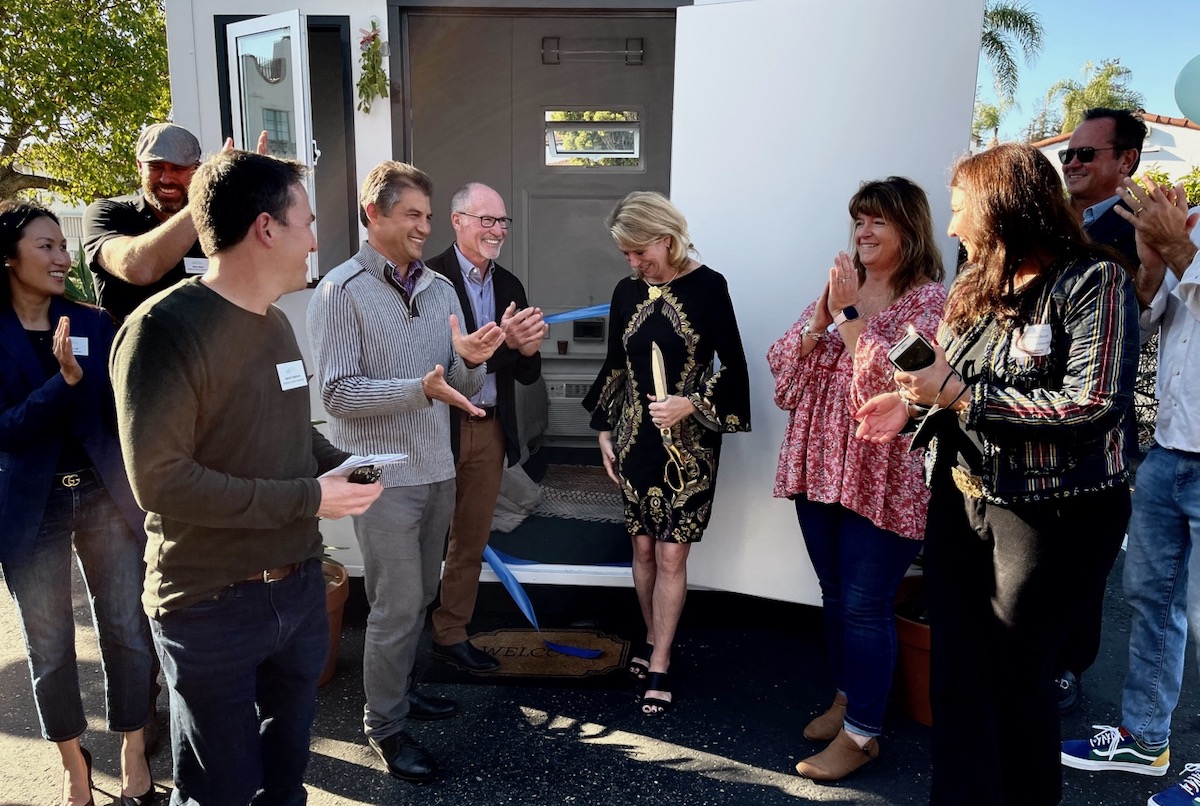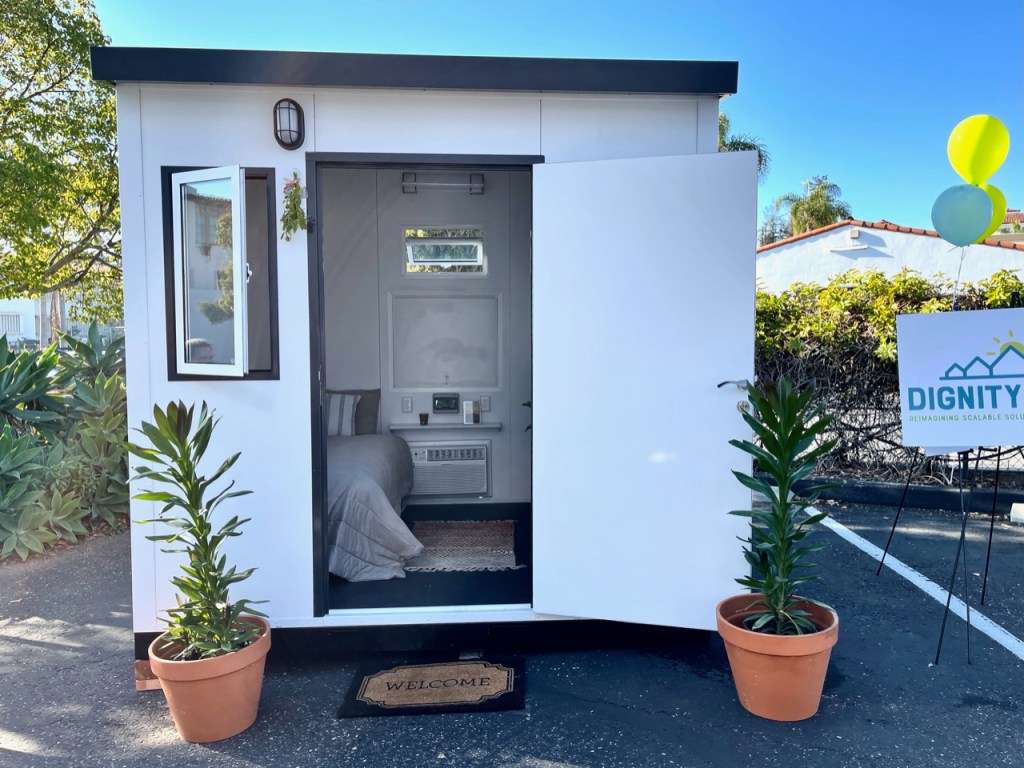Big Plans, Tiny Homes: Can Biz Brains Solve Homelessness?
DignityMoves Unveils Prototype for Homeless Cabins in Downtown Santa Barbara

To counter mounting public despair, fatigue, and frustration over the seeming intractability of homelessness, movers and shakers with DignityMoves — a statewide nonprofit made up of entrepreneurs working in conjunction with the County of Santa Barbara — held their second grand unveiling gala in one month for a new village of 33 tiny homes slated to house people experiencing homelessness on what’s now a parking lot on the 1000 block of Santa Barbara Street.

On hand Sunday for this event was a prototype of one of the custom-designed, custom-made tiny homes. By any reckoning, it’s a far cry from the glorified toolsheds many earlier tiny-home models have been. Efforts were made to fit into Santa Barbara’s s demanding architectural standards; an archway will span the entrance to the site, and the homes themselves will offer terra-cotta roofs. The aim, explained DignityMoves founder Elizabeth Funk, was to find a solution that was quick to build, cost-effective, temporary, well-run, moveable, and replicable elsewhere.
Funk is an impact investor from the Bay Area who got her start with Yahoo; she lives in a neighborhood where the sale price of homes is north of $2 million, yet she has a homeless person living in a tent across the street from her house. As an entrepreneur, Funk said, she hoped to bring a business mind and fresh set of eyes — perhaps even naïveté, she said — to a problem that appears to be getting worse, not better. She primed herself by holding 300 Zoom interviews with people already working the field.
“We think scale,” she said. “We don’t want to be chipping away at the edges of the problem.”
Sign up for Indy Today to receive fresh news from Independent.com, in your inbox, every morning.
The capital costs of the project are roughly $800,000. Of that, $450,000 has yet to be raised. That’s for the homes, the restrooms, the kitchen, and the showers. The cost of services will be borne by the County of Santa Barbara for three years using federal emergency dollars. Running the show will be the Good Samaritan shelter organization out of Santa Maria, which currently has 500 shelter beds under its control and runs the largest detox and rehab program in the county.
“In three years, we can get 200 people off the streets,” Funk said.
She cited a recent survey indicating that 83 percent of people experiencing homelessness in Santa Barbara don’t want to stay in shelters. They all want privacy, Funk said. “What’s fundamental is a door that locks,” she said. But that door, she said, is only a lure to connect residents with the services necessary to get them able to transition from the streets into some form of housing.
Most homelessness funding, she said, is spent trying to build long-term supportive housing. In Santa Barbara, that translates to $700,000 per unit and typically takes five years. With 72 percent of the county’s homeless population living outside of shelters, she said, “Our streets have literally become our waiting room.”
Construction and installation for the projects is slated to start in December and be ready for occupancy in a couple of months.
Support the Santa Barbara Independent through a long-term or a single contribution.




You must be logged in to post a comment.